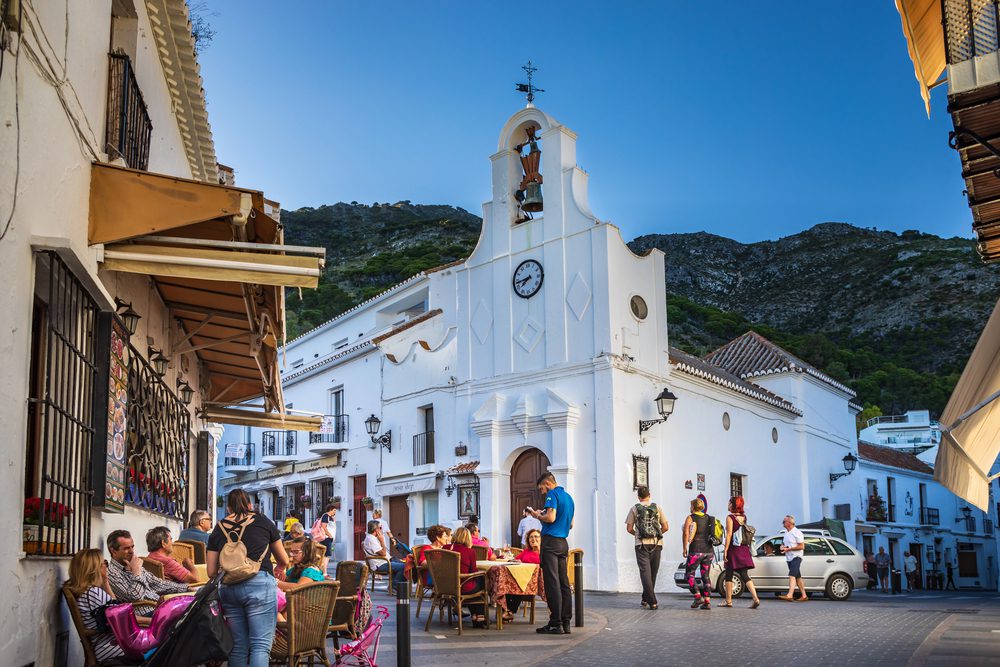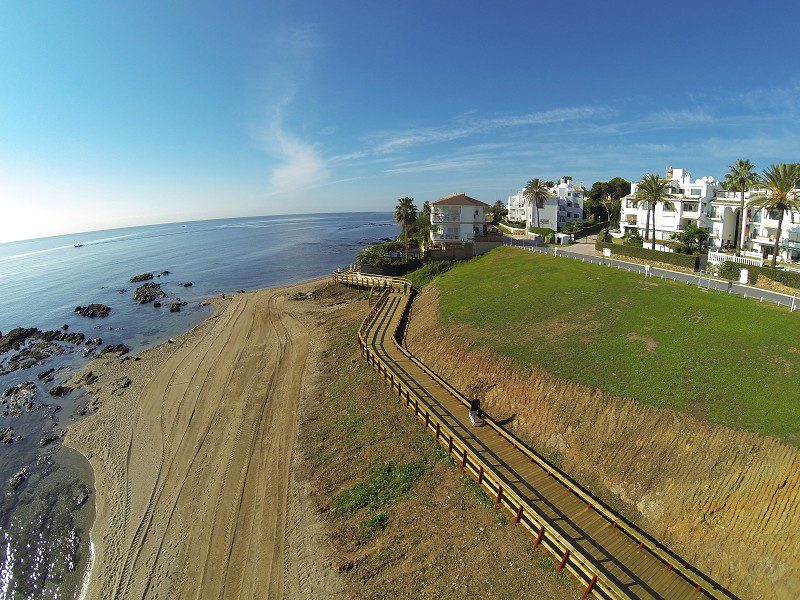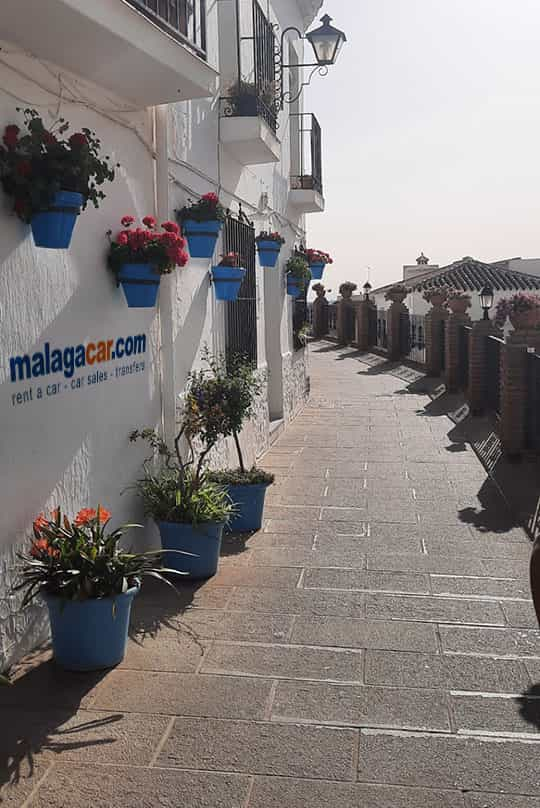
Welcome to Mijas, a hidden gem on the Costa del Sol, Malaga. This charming municipality, neighbouring Fuengirola, blends the magic of a traditional Andalusian white village with the vibrant energy of its beaches. From its cobbled streets to its Mediterranean vistas, Mijas invites you to explore its unique history, culture, and landscapes.
The terrain of Mijas is largely mountainous, featuring two distinct urban areas: Mijas Pueblo, nestled on the slopes of the sierra at 428 metres above sea level, and Mijas Costa, thriving along the coastline. Tourism is the primary economic driver, attracting visitors with its allure and diverse activities, from hiking and horse riding to golf.

Mijas, a municipality with a rich history, was originally home to the Turdetanians, an Iberian people who inhabited the Guadalquivir Valley. Descendants of the Tartessians and influenced by Greek culture, the Turdetanians were regarded by the Romans as the most cultured people on the peninsula, with a history dating back 6,000 years.
The Mijas region attracted Phoenicians and Greeks due to its mineral wealth. With the arrival of the Romans, then known as Tamisa, it became a significant commercial hub until the fall of the Roman Empire, when the Visigoths took control.
In 714, the Muslim conquest allowed Mijas’ inhabitants to retain their property and customs. Known then as Mixa, the town experienced economic growth until the Christian conquest in 1487. After the surrender, the population was enslaved, and properties were redistributed to Christians from the north.
To protect against pirate attacks, watchtowers were constructed from 1492 onwards, many of which remain visitable today. Historically, Mijas relied on agriculture and fishing, with mining and livestock playing minor roles. However, tourism transformed Mijas into a globally renowned destination on the Costa del Sol.

Mijas Pueblo is a quintessential Andalusian village, with whitewashed houses cascading down the slopes of the Mijas mountains. This picturesque village offers stunning Mediterranean views and is renowned for its donkey taxis, a unique attraction. Highlights include the Shrine of the Virgen de la Peña, the curious Miniature Museum, and the Mijas Bullring.

Mijas Costa spans 12 kilometres of coastline, featuring popular beaches and residential areas. It’s ideal for sunbathing, water sports, or savouring delicious “pescaíto frito” (fried fish) at beachside chiringuitos. Its beaches, such as La Cala and El Bombo, are among Málaga’s finest, many awarded the Blue Flag for quality.
Do you prefer the tranquillity of a white village or the vibrancy of the coast? Mijas has something for everyone!
Mijas is brimming with attractions that invite exploration of its history and culture. During summer, the municipality comes alive with open-air festivals celebrating its traditions.
Most of Mijas’ monuments have religious origins, reflecting the influence of Catholic conquerors:

Mijas, a privileged destination on the Costa del Sol, boasts high-quality beaches, perfect for sun and sea lovers. Here are some of the most notable:

Discover the beaches of Mijas with our guide!
Mijas, a charming municipality on the Costa del Sol, is known for its vibrant fairs and festivities that combine music, dance, gastronomy, and Andalusian traditions. These celebrations reflect the festive spirit of its three urban centres: Mijas Pueblo, La Cala de Mijas, and Las Lagunas. Below, we present the main fairs and events that make Mijas a lively destination throughout the year.
The Mijas Pueblo Fair, in honour of the Virgen de la Peña, the town's patron saint, is traditionally celebrated in the first half of September. This festivity transforms the white village with an atmosphere full of colour, music, and activities for all ages. The fair begins with a parade of giants and 'big-heads', followed by the inauguration of the fairground with the lighting of the artistic illuminations. For several days, visitors can enjoy:
The Daytime Fair, held in the Jardines de la Muralla, offers live performances and a family atmosphere from midday, while the Night-time Fair at the fairground shines with lights, amusement rides, and marquees.
The La Cala de Mijas Fair, honouring Santa Teresa, the patron saint of La Cala, generally takes place at the end of July. This celebration combines the coastal essence with Andalusian traditions, attracting residents and tourists to its streets and beaches. Highlights include:
The inaugural proclamation and the lighting of the artistic illuminations mark the beginning of this fair, which offers a vibrant atmosphere by the Mediterranean Sea.
The Las Lagunas Fair, dedicated to the Virgen de la Paz, is usually held between late June and early July. This fair is one of the liveliest in Mijas Costa, with a diverse programme that attracts families and visitors of all ages. Among the main activities are:
The Daytime Fair on Avenida Miguel Hernández offers live music and local gastronomy, while the Night-time Fair at the fairground is packed with lights, attractions, and marquees.
In addition to its three main fairs, Mijas hosts a variety of traditional and multicultural events throughout the year, enriching its festive calendar:
Check the official programme: Timetables and activities may vary. Visit the official Mijas Town Hall website for updated details.
Mijas’ cuisine reflects Andalusian tradition, with Mediterranean flavours that delight visitors. In Mijas Costa, beachside chiringuitos serve pescaíto frito (fried fish), while in Mijas Pueblo, you can enjoy gazpacho, salmorejo, or traditional stews at restaurants with panoramic views.
We recommend visiting Restaurante El Mirlo Blanco for its Basque-Andalusian cuisine or exploring tapas bars in Plaza Virgen de la Peña. Pair your meal with a wine from Málaga!
Nature enthusiasts will find Mijas a hiking paradise. The Sierra de Mijas offers trails like the Sendero de la Cruz, with spectacular Mediterranean views. Golf lovers can enjoy Mijas Golf, featuring two 18-hole courses.
In Mijas Costa, water sports such as paddleboarding, kayaking, or jet skiing are popular. Horse riding is also available to explore the region’s landscapes.
Mijas is approximately 22 km from Málaga Airport, about a 20-minute drive. You can hire a car with car hire in Málaga or book a taxi transfer to Mijas. Buses (lines M-112 and M-320) connect the airport to Mijas in around 45 minutes.
While there’s no direct train to Mijas, several bus lines connect the municipality with Málaga and nearby towns:
Check updated timetables on the official Avanza website.

Donkey taxis are an iconic Mijas attraction, originating in the 1950s when workers offered donkey rides to tourists. Today, they have their own station and offer a delightful way to explore Mijas Pueblo’s cobbled streets, with panoramic views.
The best time to visit Mijas is between spring (March-May) and autumn (September-November), when the weather is warm but not excessively hot. Wear comfortable shoes for Mijas Pueblo’s steep streets and sunscreen for Mijas Costa’s beaches.
Book donkey taxi rides in advance during summer. Don’t miss the local markets, where you can find handicrafts and regional products.
Learn more in our Mijas blog and uncover secrets for an unforgettable visit.

Mijas Town Hall: Plaza Virgen de la Peña, s/n. 29650.
Telephone: +34 952 58 90 34
Official website